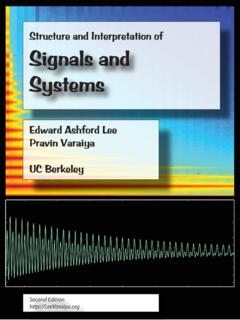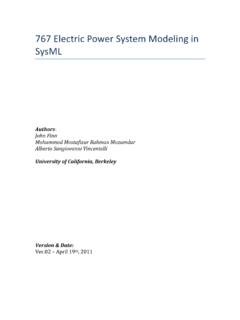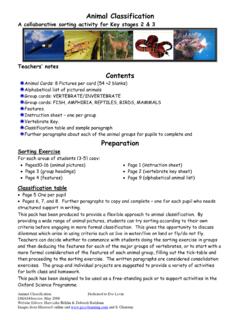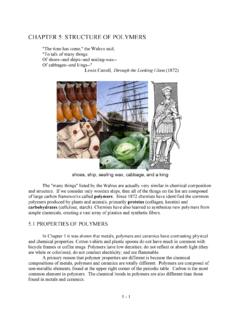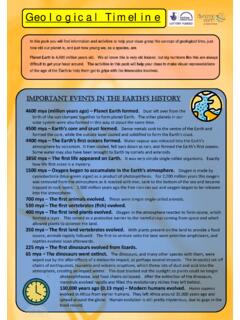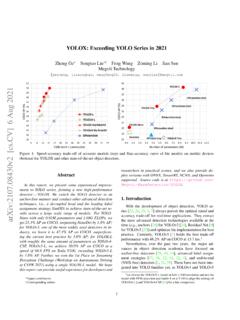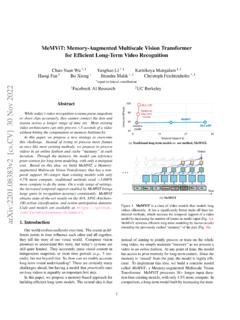Transcription of The Boolean Satisfiability Problem (SAT) - Ptolemy Project
1 Fundamental Algorithms for System Modeling, Analysis, and OptimizationEdward A. Lee, Jaijeet Roychowdhury, Sanjit A. SeshiaUC BerkeleyEECS 144/244 Fall 2011 Copyright 2010-11, E. A. Lee, J. Roychowdhury, S. A. Seshia, All rights reservedBoolean Satisfiability (SAT) Solving2 The Boolean Satisfiability Problem (SAT) Given: A Boolean formula F(x1, x2, x3, .., xn) Can F evaluate to 1 (true)? Is F satisfiable? If yes, return values to xi s (satisfying assignment) that make F true 3 Why is SAT important?
2 Theoretical importance: First NP-complete Problem (Cook, 1971) Many practical applications: Model Checking Automatic Test Pattern Generation Combinational Equivalence Checking Planning in AI Automated Theorem Proving Software Verification ..4An Example Inputs to SAT solvers are usually represented in CNF(a + b + c) (a + b + c) (a + b + c ) (a + b + c )5An Example Inputs to SAT solvers are usually represented in CNF(a+ b+ c) (a + b + c) (a+ b + c ) (a + b+ c )6 Why CNF?7 Why CNF? Input-related reason Can transform from circuit to CNF in linear time & space (HOW?)
3 Solver-related: Most SAT solver variants can exploit CNF Easy to detect a conflict Easy to remember partial assignments that don t work (just add conflict clauses) Other ease of representation points? Any reasons why CNF might NOT be a good choice?8 Complexity of k-SAT A SAT Problem with input in CNF with at most k literals in each clause Complexity for non-trivial values of k: 2-SAT: in P 3-SAT: NP-complete > 3-SAT: ?9 Worst-Case Complexity10 Beyond Worst-Case Complexity What we really care about is typical-case complexity But how can one measure typical-case ?
4 Two approaches: Is your Problem a restricted form of 3-SAT? That might be polynomial-time solvable Experiment with (random) SAT instances and see how the solver run-time varies with formula parameters (#vars, #clauses, .. )11 Special Cases of 3-SAT that are polynomial-time solvable Obvious specialization: 2-SAT T. Larrabee observed that many clauses in ATPG tend to be 2-CNF Another useful class: Horn-SAT A clause is a Horn clause if at most one literal is positive If all clauses are Horn, then Problem is Horn-SAT Application.
5 - Checking that one finite-state system refines (implements) another12 Phase Transitions in k-SAT Consider a fixed-length clause model k-SAT means that each clause contains exactly k literals Let SAT Problem comprise mclauses and nvariables Randomly generate the Problem for fixed k and varying m and n Question: How does the Problem hardness vary with m/n ?133-SAT HardnessAs n increases hardness transition grows sharperm / n14 Transition at m/n' / n15 Threshold Conjecture For every k, there exists a c* such that For m/n < c*, as n , Problem is satisfiablewith probability 1 For m/n > c*, as n , Problem is unsatisfiable with probability 1 Conjecture proved true for k=2 and c*=1 For k=3, current status is that c* is in the range (2+p)-SAT Model We know.
6 2-SAT is in P 3-SAT is in NP Problems are (typically) a mix of binary and ternary clauses Let p {0,1} Let Problem comprise (1-p) fraction of binary clauses and p of ternary So-called (2+p)-SAT problem17 Experimentation with random (2+p)-SAT When p < ~ Problem behaves like 2-SAT Linear scaling When p > ~ Problem behaves like 3-SAT Exponential scaling Nice observations, but don t help us predict behavior of problems in practice18 Backbones and Backdoors backbone [Parkes; Monasson et al.]
7 ] Subset of literals that must be true in every satisfying assignment (if one exists) Empirically related to hardness of problems Backdoor [Williams, Gomes, Selman] Subset of variables such that once you ve given those a suitable assignment (if one exists), the rest of the Problem is poly-time solvable Also empirically related to hardness But no easy way to find such backbones / backdoors! 19A Classification of SAT Algorithms Davis-Putnam (DP) Based on resolution Davis-Logemann-Loveland (DLL/DPLL) Search-based Basis for current most successful solvers Stalmarck s algorithm More of a breadth first search, proprietary algorithm Stochastic search Local search, hill climbing, etc.
8 Unable to prove unsatisfiability (incomplete)20 Resolution Two CNF clauses that contain a variable x in opposite phases (polarities) imply a new CNF clause that contains all literals except x and x (a + b) (a + c) = (a + b)(a + c)(b + c) Why is this true? 21 The Davis-Putnam Algorithm Iteratively select a variable x to perform resolution on Retain only the newly added clauses and the ones not containing x Termination: You either Derive the empty clause (conclude UNSAT) Or all variables have been selected22 Resolution ExampleHow many clauses can you end up with?
9 (at any iteration)23A Classification of SAT Algorithms Davis-Putnam (DP) Based on resolution Davis-Logemann-Loveland (DLL/DPLL) Search-based Basis for current most successful solvers Stalmarck s algorithm More of a breadth first search, proprietary algorithm Stochastic search Local search, hill climbing, etc. Unable to prove unsatisfiability (incomplete)24 DLL Algorithm: General Ideas Iteratively set variables until you find a satisfying assignment (done!) you reach a conflict (backtrack and try different value) Two main rules: Unit Literal Rule: If an unsatisfied clause has all but 1 literal set to 0, the remaining literal must be set to 1(a+ b+ c) (d + e) (a+ c + d) Conflict Rule.
10 If all literals in a clause have been set to 0, the formula is unsatisfiable along the current assignment path25 Search TreeDecision level26 DLL Example 127 DLL Algorithm Pseudo-codePreprocessBranchPropagate implications of that branch and deal with conflicts28 DLL Algorithm Pseudo-codePre-processingBranchingUnit propagation (apply unit rule)Conflict Analysis & BacktrackingMain Steps:29 Pre-processing: Pure Literal Rule If a variable appears in only one phase throughout the Problem , then you can set the corresponding literal to 1 if we only see a in the CNF, set a to 1 (a to 0) Why?
